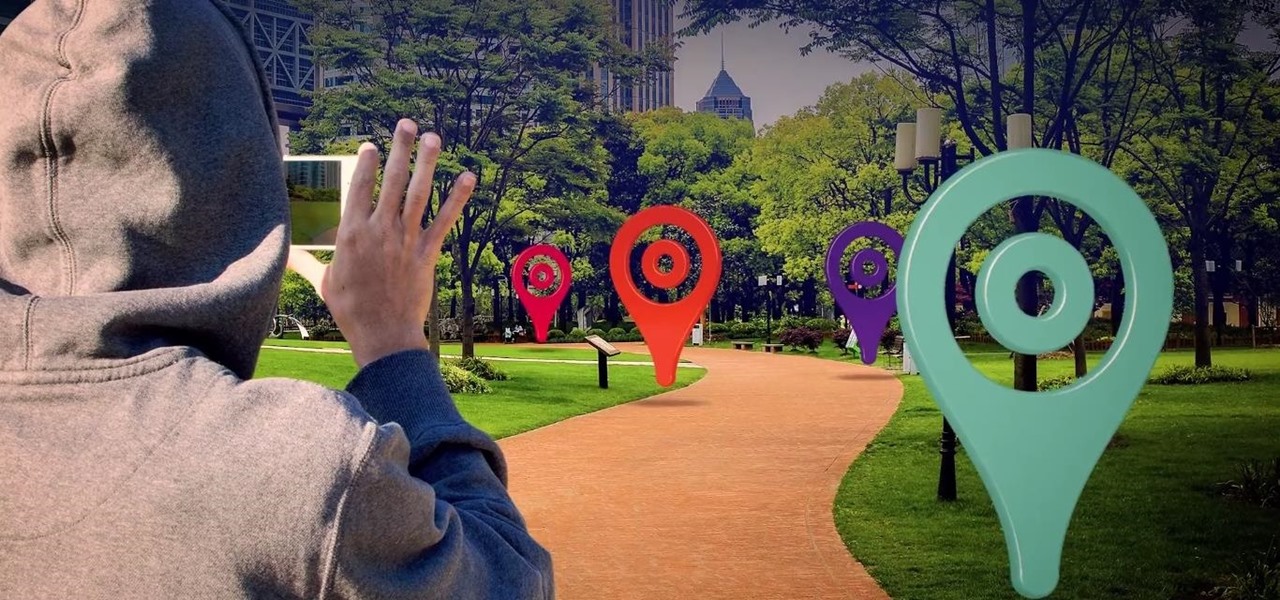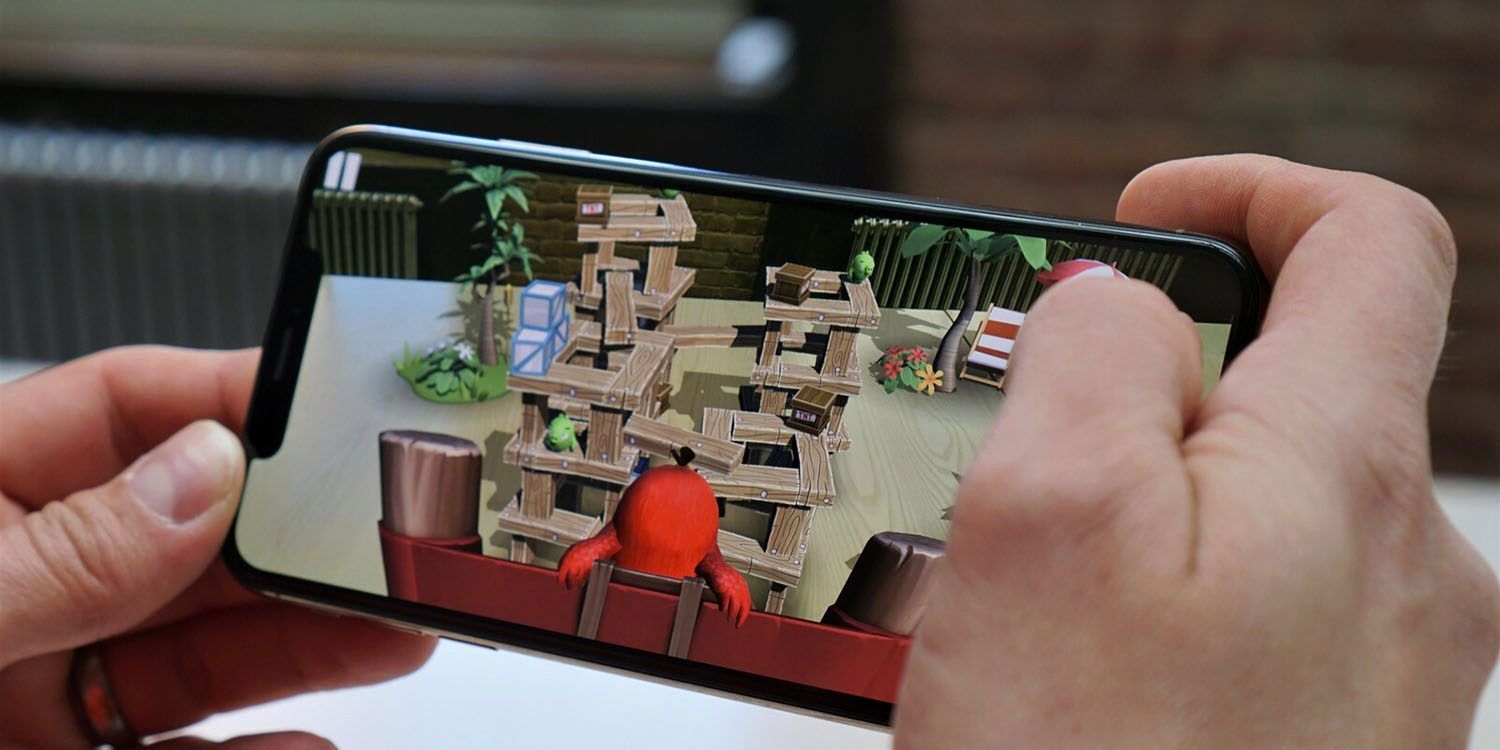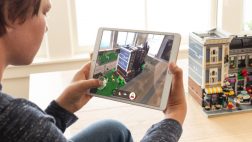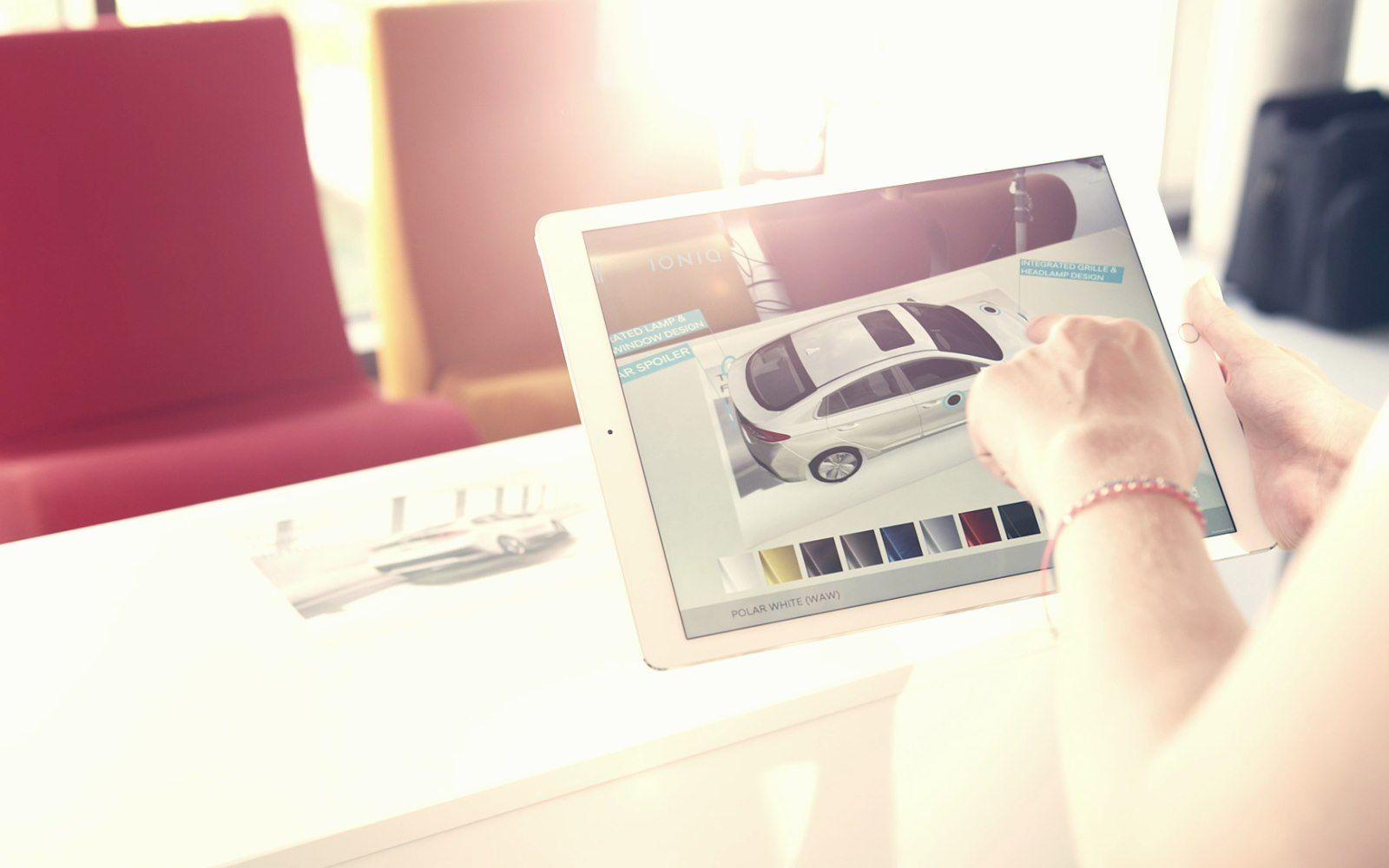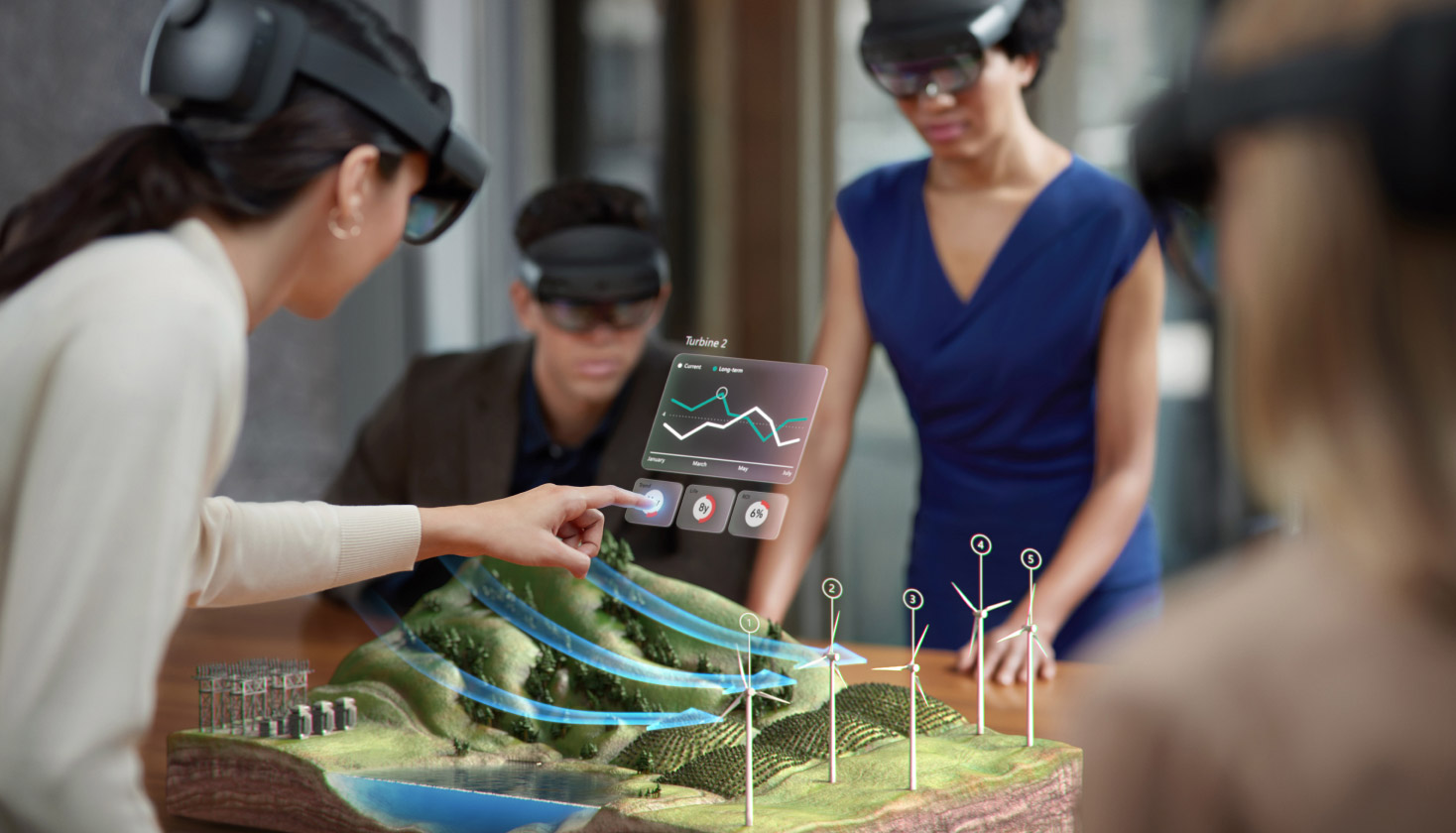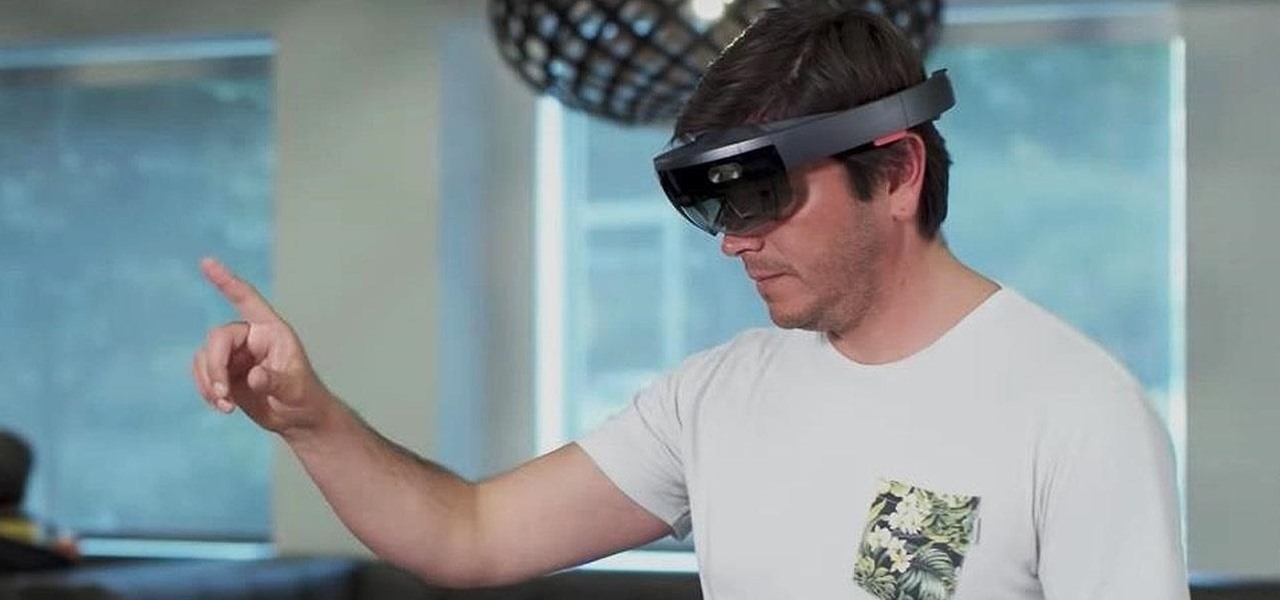Introduction
Technology has significantly transformed the way we interact with the world around us. One such groundbreaking technology that has gained immense popularity in recent years is augmented reality (AR). With AR, digital information and virtual elements are seamlessly integrated into the real world, enhancing our perception and interaction with our surroundings. As AR continues to advance, a new form of AR has emerged – location-based augmented reality.
Location-based augmented reality, as the name suggests, combines the power of AR with the user’s location to offer a more personalized and immersive experience. By leveraging GPS and other positioning technologies, location-based AR provides users with context-specific information and virtual enhancements based on their current physical location.
Imagine walking down the street and being able to see virtual signposts guiding you to nearby attractions or restaurants, or pointing your smartphone at a historic landmark and instantly receiving historical facts and stories. Location-based AR opens up a world of possibilities by overlaying digital content onto the real world in a way that is seamlessly integrated and relevant to our immediate surroundings.
So how does location-based augmented reality actually work? And what are its uses and limitations? In this article, we will delve into the intricacies of location-based AR, exploring its functionality, applications, and the advantages and challenges it presents. We will also take a look at some popular location-based AR apps that are revolutionizing the way we experience the world.
What is Augmented Reality?
Before understanding location-based augmented reality, it is important to have a clear understanding of augmented reality (AR) itself. Augmented reality refers to the technology that combines the real world with virtual elements, thereby enhancing our perception and interaction with our surroundings.
In AR, digital information such as 3D models, images, and animations are superimposed onto the real world in real-time. This overlay of virtual content can be experienced through various devices, including smartphones, tablets, smart glasses, and headsets.
The primary goal of augmented reality is to enhance our perception and interaction with the real world by adding contextual and relevant digital content. This can range from simple text and graphics to complex interactive elements. Users can typically view the augmented reality content through the device’s camera, which captures the real-world environment and augments it with virtual elements.
Augmented reality has found its applications in various fields, including gaming, education, healthcare, marketing, and industrial training. It offers a unique and immersive experience that blurs the line between the digital and physical worlds.
AR technology has continued to evolve over the years, becoming more advanced and accessible. With the advent of powerful smartphones and improved computing capabilities, augmented reality has become a mainstream technology that is widely used and appreciated by both consumers and businesses.
Now that we have a better understanding of augmented reality, let’s explore its location-based variation and how it takes the user experience to a whole new level.
What is Location-Based Augmented Reality?
Location-based augmented reality (AR) builds upon the foundations of AR by incorporating the user’s location as a key factor in delivering relevant and personalized digital content. Rather than simply overlaying virtual elements onto the real world, location-based AR takes into account the user’s geographic position to offer contextually relevant information and experiences.
Location-based AR relies on GPS and other technologies to determine the user’s precise location. By knowing where the user is, the augmented reality system can provide them with tailored content based on their surroundings. This can include information about nearby points of interest, local businesses, historical facts, or even personalized recommendations.
The integration of location data adds a new layer of depth and specificity to the augmented reality experience. It allows users to effortlessly explore and engage with their environment in a more meaningful way. Location-based AR can be experienced through mobile devices, where the device’s GPS and compass are utilized to align the virtual content with the real-world locations.
One of the key advantages of location-based AR is its ability to provide real-time information that is highly relevant to the user’s current location. For example, when visiting a new city, a user can use a location-based AR app to navigate and discover nearby attractions, restaurants, and landmarks. The app can overlay virtual signposts, directions, and reviews onto the real-world view, making it easier for the user to explore and make informed decisions.
Furthermore, location-based AR opens up opportunities for educational and historical experiences. Users can point their devices at a museum exhibit or a historical site, and the AR app can provide them with detailed information, interactive elements, and even virtual reconstructions of the past. This allows users to learn and engage with their surroundings in an immersive way.
Overall, location-based augmented reality enhances the AR experience by adding location-specific context. It provides users with relevant and personalized information, facilitates navigation, and offers unique interactive experiences that are seamlessly integrated into their physical surroundings.
How does Location-Based Augmented Reality work?
Location-based augmented reality (AR) relies on a combination of technologies and data to deliver a personalized and contextually relevant experience to users. The main components that make location-based AR possible include GPS, compass, mapping data, and tracking algorithms.
First and foremost, GPS (Global Positioning System) is used to determine the user’s precise location. GPS receivers in mobile devices or wearable AR devices receive signals from multiple satellites and calculate the user’s coordinates. This information forms the basis for providing location-specific augmented reality content.
The compass, or magnetometer, is another crucial component used in location-based AR. It provides the direction the user is facing, allowing the AR system to align the virtual content with the user’s physical surroundings accurately.
In addition to GPS and compass, mapping data plays a vital role in location-based AR. Mapping data provides information about the physical world, including roads, buildings, landmarks, and points of interest. The AR system utilizes this data to overlay virtual elements onto the real-world view, ensuring that they are accurately aligned with the user’s surroundings.
Tracking algorithms are employed to continuously monitor the user’s movement and update the augmented reality content in real-time. These algorithms analyze the changes in the user’s position and orientation, ensuring that the virtual elements remain aligned with the user’s perspective as they move through their environment.
When the location and orientation of the user are accurately determined, the location-based AR system can deliver contextually relevant information and virtual enhancements. This can include displaying nearby businesses, providing navigation directions, offering historical information, or even enabling interactive virtual experiences.
Location-based AR can be experienced through various devices, including smartphones, tablets, and wearable AR headsets. Mobile devices leverage their built-in GPS, compass, and mapping capabilities, while wearable AR headsets often incorporate these technologies into their hardware to provide a more seamless and immersive experience.
Overall, the combination of GPS, compass, mapping data, and tracking algorithms allows location-based AR to provide users with a dynamic and personalized digital layer that is tightly integrated with their physical surroundings.
Use Cases for Location-Based Augmented Reality
Location-based augmented reality (AR) offers a wide range of applications across various industries, revolutionizing the way we interact with our environment. Here are some notable use cases for location-based AR:
- Tourism and Travel: One of the most prominent applications of location-based AR is in the tourism and travel industry. AR apps can provide users with interactive and informative experiences as they explore new destinations. Users can receive real-time information about nearby attractions, historical landmarks, restaurants, and accommodations. They can also access virtual guided tours, augmented reality maps, and immersive experiences that enhance their travel adventures.
- Real Estate: Location-based AR has transformed the way people search for and experience properties. Potential buyers and renters can use AR apps to find available properties in their desired location. They can view virtual property listings overlaid on the real-world view, making it easier to visualize and compare options. Additionally, AR can provide detailed information about the surrounding neighborhood, local amenities, and property features.
- Retail and Marketing: Location-based AR is a valuable tool for retailers and marketers to enhance customer engagement and drive sales. AR apps can offer personalized shopping experiences by providing customized recommendations, special offers, and interactive product information based on the user’s location. Retailers can also leverage AR to create virtual pop-up stores or augmented reality treasure hunts to attract and engage customers.
- Education and Training: Location-based AR has immense potential in the field of education and training. It enables students and trainees to have immersive and interactive learning experiences in real-world environments. For example, AR apps can overlay educational content, historical facts, and interactive elements onto museum exhibits or historical sites, allowing learners to gain a deeper understanding of the subject matter.
- Urban Planning and Architecture: Location-based AR can be instrumental in urban planning and architecture. AR apps can simulate proposed building projects within the existing physical environment, allowing urban planners and architects to visualize and evaluate the impact of new structures. They can also provide valuable insights into the functionality and aesthetic aspects of buildings before their construction.
- Healthcare: Location-based AR has applications in the healthcare industry, particularly in medical training and patient care. AR can assist doctors and medical professionals in visualizing complex medical data, providing real-time guidance during procedures, or overlaying virtual information onto a patient’s body for better diagnostics and treatments.
These are just a few examples of how location-based AR is being utilized across different sectors. As the technology continues to advance, we can expect to see even more innovative and impactful applications in the future.
Advantages and Limitations of Location-Based Augmented Reality
Location-based augmented reality (AR) offers numerous advantages that enhance user experiences and provide value across various industries. However, like any technology, it also has its limitations. Let’s explore the advantages and limitations of location-based AR:
Advantages:
- Personalized and Relevant Content: Location-based AR delivers contextually relevant information to users based on their current location. This personalized content enhances user experiences by providing real-time and location-specific information, recommendations, and interactive elements.
- Enhanced Navigation and Wayfinding: Location-based AR can assist users in navigating unfamiliar environments by overlaying directions, signposts, and points of interest onto the real-world view. It simplifies navigation, improves efficiency, and helps users explore their surroundings with greater ease.
- Improved Engagement and Interactivity: By merging digital content with the physical world, location-based AR creates immersive and interactive experiences. Users can engage with virtual objects, access additional information, and interact with their environment in novel and entertaining ways.
- Efficient Information Retrieval: Location-based AR enables quick and easy access to relevant information. Users can retrieve details about nearby businesses, landmarks, events, and historical facts without the need for manual search. This streamlines information retrieval and enhances decision-making processes.
- Enhanced Learning and Training: Location-based AR has significant applications in educational settings. By overlaying educational content onto real-world locations, it offers engaging and interactive learning experiences. It can also be used for training purposes to simulate real-world scenarios and enhance practical skills.
Limitations:
- Technical Infrastructure Requirements: Location-based AR heavily relies on accurate positioning technologies such as GPS. In areas with poor GPS signals or limited network connectivity, the functionality and accuracy of location-based AR may be compromised.
- Data Accuracy and Dependence: The effectiveness of location-based AR relies on the availability and accuracy of mapping and location data. Outdated or incomplete data can lead to inaccuracies, which may affect the user experience and the reliability of location-based AR applications.
- Battery Consumption: Augmented reality applications can be demanding on device batteries due to the need for constant GPS and rendering processes. The use of location-based AR may result in increased power consumption, leading to shorter battery life.
- Privacy Concerns: Location-based AR apps require access to user location data, which raises privacy concerns. Users must trust app providers to handle their location information responsibly and securely.
- User Distraction and Safety: Engaging with location-based AR content while navigating real-world environments can potentially distract users and compromise their safety. It is essential for users to exercise caution and follow safety guidelines to prevent accidents or hazards.
As technology continues to advance and these limitations are addressed, location-based AR holds tremendous potential for delivering immersive and valuable experiences to users across different sectors.
Popular Location-Based Augmented Reality Apps
Location-based augmented reality (AR) has seen tremendous growth in recent years, leading to the development of a variety of innovative and popular apps. These apps seamlessly blend the virtual and physical worlds, offering unique and immersive experiences. Here are some examples of popular location-based AR apps:
- Pokémon Go: Pokémon Go took the world by storm when it was released in 2016. The app combines location-based AR with gaming, allowing players to search for and capture virtual Pokémon creatures in real-world locations. Pokémon are placed in specific areas, and users must physically move around to find them, promoting exploration and discovery.
- Google Maps Live View: Google Maps Live View utilizes location-based AR to provide users with real-time navigation guidance. By combining GPS data with the device’s camera, the app overlays directional arrows and street names onto the live camera view, making it easier for users to navigate through unfamiliar environments.
- Star Walk 2: Star Walk 2 is a stargazing and astronomy app that utilizes location-based AR to provide users with an interactive guide to the night sky. By pointing the device at the sky, the app identifies stars, constellations, planets, and other celestial objects, overlaying relevant information and visuals onto the real-world view.
- Yelp: Yelp, a popular restaurant and business review app, incorporates location-based AR to enhance the user experience. Through the app’s “Monocle” feature, users can hold up their device and see overlaid reviews, ratings, and information about nearby businesses. This allows users to make informed decisions about restaurants, shops, and other establishments based on their location.
- IKEA Place: IKEA Place utilizes location-based AR to help users visualize furniture and decor in their own homes. The app allows users to choose from a catalog of IKEA products and place them virtually in their space using the device’s camera. This enables users to see how the furniture will look and fit in their specific location before making a purchase.
- Ingress Prime: Ingress Prime is an AR game that combines location-based gameplay with a futuristic storyline. Players must explore real-world locations to capture portals and participate in strategic battles between two factions. The game’s virtual elements are overlaid onto the real world, creating a dynamic and immersive gaming experience.
- Wikitude: Wikitude is an AR platform that offers an array of location-based AR experiences. The app allows users to discover nearby points of interest, access augmented reality city guides, explore augmented reality museums, and even create their own AR content. It provides a versatile platform for developers and users to engage with location-based augmented reality.
These are just a few examples of the many popular location-based AR apps available today. Each app showcases the unique and creative ways that location-based AR can enhance various aspects of our lives, from gaming and navigation to shopping and exploration.
Conclusion
Location-based augmented reality (AR) has revolutionized the way we interact with our surroundings, seamlessly blending the real world with virtual elements. By leveraging GPS and other positioning technologies, location-based AR delivers personalized and contextually relevant information and experiences to users based on their current location.
Through popular apps like Pokémon Go, Google Maps Live View, and Yelp, users can explore new places, navigate with ease, discover local businesses, and engage in immersive gaming experiences. Location-based AR also finds applications in fields like real estate, education, retail, and healthcare, offering enhanced learning experiences, personalized recommendations, and interactive shopping opportunities.
While location-based AR presents a range of advantages, such as personalized content, enhanced navigation, and improved engagement, it also has its limitations, including technical infrastructure requirements, data accuracy, and privacy concerns. Nevertheless, as technology continues to progress, these limitations are expected to be addressed, further expanding the potential of location-based AR.
Overall, location-based AR is shaping the future of how we experience and interact with the world. With its ability to seamlessly merge the virtual and physical realms, it opens up new opportunities for exploration, education, entertainment, and practical use cases across industries. As the technology evolves, we can expect to see even more innovative and impactful applications that enhance our daily lives and reshape our understanding of reality.







